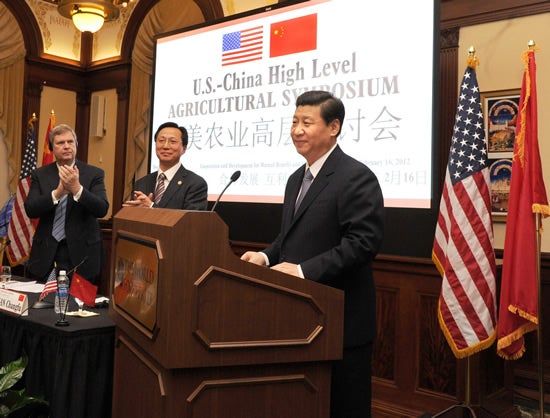Takeaways from Chinese Vice President Xi Jinping’s Visit to the U.S.
Dean Cheng /
Chinese Vice President Xi Jinping’s visit to the United States was extremely short on substance. It was really just a public relations exercise for both sides aimed at audiences back home. And as for building rapport between leaders, by nature, the visit was bound to come up short. President Obama and Vice President Biden on the one hand and Vice President Xi on the other come from vastly different political cultures. Literally, they do not even speak the same language.
In general, the press focus on Xi’s biography was grossly misplaced. The details of Xi’s life and career are not anywhere near as important as the role he plays in the Chinese Communist Party, the dynamics within the party, and (perhaps most importantly) the dynamics on its nine-member Politburo Standing Committee (PSC).
China is no longer led by a single “Great Helmsman,” as during the days of Mao Zedong, or even a single “paramount leader,” such as Deng Xiaoping. Instead, China’s leadership today is collective, and no single person, including Xi Jinping, is able to create and implement Chinese policy without the support of the rest of the PSC.
At the very least, the U.S. had an opportunity to convey clear messages to the Chinese leadership. Undoubtedly, one of the key messages that President Obama is hoping that Xi will take home is the American commitment to remaining a major player in Pacific affairs. Indeed, the whole concept of the “pivot to Asia,” which has dominated recent discussions of U.S.–Asian relations, is intended to signal Beijing in this regard.
Yet Administration actions have often undercut this very message. The new Defense Strategic Guidance, which outlines U.S. military priorities, gives no indication of what resources will be shifted to Asia to support the so-called pivot. Indeed, in a period when the defense budget is facing enormous cuts, there is not even a hint that Asia-related expenditures will be “fenced off.”
Meanwhile, in its public diplomacy, Secretary of Defense Leon Panetta and Secretary of State Hillary Clinton have been busy reassuring European allies that the U.S. was not drawing down its commitment. Panetta even went so far as to claim that Europe is the “security partner of choice for military operations and diplomacy around the world.” Senior Administration officials have also stated that the United States would remain committed to the Middle East and would not allow Iran to obtain nuclear weapons. To that end, Panetta declared that resources remained committed to these objectives as well. What kind of “pivot” involves neither gaining resources nor reducing commitments elsewhere?
Perhaps nothing better encapsulates the mismatch between rhetorical flourish and actual policy objectives, however, than the revelation, on the eve of Xi’s visit, that President Obama is contemplating cuts in U.S. nuclear forces by up to 80 percent. One wonders how this played in Beijing, where, on the eve of then-Secretary of Defense Robert Gates’ visit to China about a year ago, the Chinese rolled out their new J-20 stealth fighter prototype.
Chinese military spending, meanwhile, is now forecast to be larger than that of all other Asian nations combined. China, which remains regionally focused, can afford to allocate almost of all its modernizing forces to the western Pacific and the “first island chain” stretching from Japan and Korea in the north through Taiwan and the Philippines to Indonesia and the Straits of Malacca in the south. Washington, especially if it intends to retain its commitments and force allocations to Europe and the Middle East, can apportion only a fraction of its shrinking resources to counter Beijing.
Almost exactly a century ago, Teddy Roosevelt pursued the policy of “speak softly, but carry a big stick.” Today, President Obama and his Administration appear to be following the exact opposite tack of “shout loudly from the rooftops, but whittle away your stick.”

